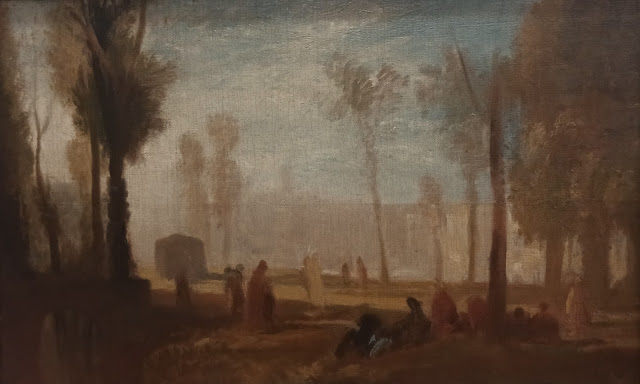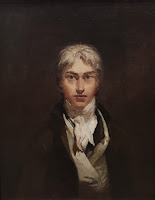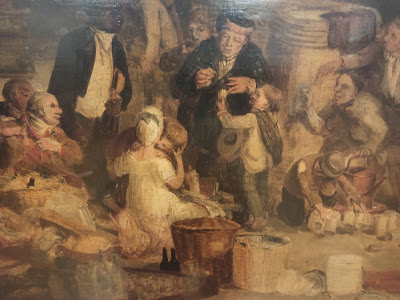Douglas Murray’s
The Madness of Crowds explores the contemporary thread of identity politics which permeates our culture and has come to really dominate it today. The book’s structure explores each aspect in turn; gay, women, race, and trans.
Is this a madness? I think Murray is right. Not in the sense of derangement. But in the sense which he means it, namely with reference to Charles Mackay’s Extraordinary Popular Delusions and the Madness of Crowds.
In Murray’s interlude on forgiveness, he suggests that the contemporary culture of apologising, repentance, and witch-hunts – which he seems to attribute to social media and a loss of our foundational grand narratives – may have something to do with this mania.
The tone of this book is calm, reflective, and accommodating. Often, quite thought provoking. I find Murray’s literary style a bit run-of-the-mill. There is wit, butt a note of pessimism throughout (which may be justified). This is a battle that feels has been lost.
Below, as part of this review, I focus on a few elements of the book.
✲✲✲
Intersectionality
At the heart of the postmodern progressive outlook is the concept of intersectionality. The term is reputed to have originated with Crenshaw. She contended that one can examine the multiple ways in which “oppression” can manifest itself through an “intersection” of identities through various strata. That way, society would be more able to weigh the “privilege” against the “disadvantage.”
I think, in a vague way, this feels intuitive (particularly, as an example, in the context of Crenshaw’s court case in which she appeared as counsel). However, I don’t think it makes a lot of sense once the broader implications of the doctrine are carefully examined.
As already mentioned, intersectionality impresses either the “privileged” or the “discriminated against” stamp wholesale to certain groups. The problem is that, by implication, also to all members of that group. Such a framework is intended to account for the perceived discrepancies of the real world, and so it naturally lends itself, in that regard, to a victim-oppressor dynamic. The inherent assumption – through the telescope of intersectionality – is that perceived discrepancies are the causal effect of oppression. That’s a mistake. Oppression may be one explanation, but life tends to offer multi-causal explanations; and it is not clear that broad generalisation really account for individual justice.
One of its most bizarre affectations is the way people are often categorised into an ostensible monolith – such as BAME or LGBTQI+. The reality is that people aren’t nearly as monolithic as we expect (or, rather, would like them to be). Once we start sheepherding people into pens, we assumed that they think the same, and can be treated the same. The lumping together of hundreds of culturally diverse and geographically divergent ethnicities that have nothing in common is absurd and even, perhaps, insulting. They don’t have comparable experiences of racism etc.
The flaw in the use of abbreviations is surely evident in LGBTQI+. Apart from some degree of some overlap in some things – they are probably more different than they are alike. And, as Douglas Murray points out, its fundamentally unclear whether the experiences are sufficiently analogous to warrant such a unit block.
In America, it has becoming “LGBTQIAPPK” with the other letters signifying queer, intersex, asexual, pansexual, polyamorous and kink. Indeed, the very use of the “+” (plus) shows how clumsy and unmanageable it is. The overarching question is what does it mean to be “LGBTQI+”? As Douglas Murray noted:
LGBT is now one of the groupings which mainstream politicians routinely speak about – and to – as if they actually exist like a racial over ledges community. It is a form of absurdity. Even on its own terms this composition is widely unsustainable and contradictory. Gay men and gay women have almost nothing in common … Neither have very much use for each other, and almost none meet in any communal spaces.
As everyday common-sense will bear out, nobody actually uses the word “BAME”. Nobody says: “I’ve made a new friend today … he’s BAME”! How ridiculous would that sound? Nobody says: “Arh, yes … our new housemate John is LGBTQI+”. We say “our new housemate John is gay” or trans or whatever. So, we must ask; to whom does this categorisation render most utility? To lump people together and puree them into a soup? As Murray argued, the implicit shortcomings in the framework of intersectionality renders it a fundamental misapprehension of reality.
There are four arguments that I would also add:
Firstly, there are an infinite number of ways in which a person can be defined as possessing either a “privilege” or “discrimination”. See the ‘Matrix of domination’ graph below. The end point is a competition for the most ways a person can be labelled a “victim”, if only to abnegate the “oppressor” tag. It’s this competition that is driving identity politics. (For example, Asians have sometimes been categorised as “white adjacent”!). So, because of this endless varieties of oppression, it says more about our meta psychology than reflecting reality. And, to the extent that it does reflect reality, I think it succeeds but only at a great deal of oversimplification.

Secondly, as the epithet “white straight male” denotes, our society frames intersectionality against that prism. And yet, the most conspicuous unevenness in our world is probably class. It’s a fuzzy amorphous concept which isn’t liable to a simplified blueprint; and yet I think it exists. Indeed, what about one’s locality and circumstances? In many instances, the poor white straight male is probably worse off than the rich black female lesbian. Also, consider the incongruities of life for a person living in London as opposed to Kabul?
Thirdly, it assumes that oppression (or, even, privilege) advances generally in one direction. But, in actuality, context matters tremendously. So, for example, if you want to go into teaching, the statistics show that it’s better to be a woman. On the other hand, the construction industry is tilted towards men. Assuming such discrepancies are a result of oppression, it would point in different directions.
Fourthly, while some generalisations of disadvantage may be true, most people don’t fit into such sweeping stereotypes. In fact, to my mind, sweeping generalisations tend to give voice to a prejudice. Much more relevant are the individual’s innate characteristics and experiences which have informed the struggle more than general assumptions. As David Foster Wallace taught us, in his speech This is Water, the essence of education is being able to perceive and appreciate things from a different perspective.
✲✲✲
Additionally, Murray traces the broader intersectionality framework within a traditional Marxist substructure of the bourgeois-proletariat dynamic. The forces of revolutionary proletarianism had rebuffed and forsaken Marxists (except among the third world countries and former colonial states in contrast to the booming developed capitalist economies). Instead, that antagonism is instead wrought through an alternative hierarchy of oppression. This struggle for ‘social justice’ replaces the former proletarian analysis but remains subtlety underlaid by the usual anti-capitalist credo. (In Murray's book, it’s well worth reading the bits about Eurocommunism, Palmiro Togliatti, and Gramaci’s critique of culture as a hegemonic force.)
✲✲✲
Gay
Murray begins this section of the book by recalling his experience when he attended an exhibition of a small viewing of a film called the Voices of the Silenced. Apparently, this film documented the case for gay-to-straight conversion therapy. Murray points out how PinkNews concerted to pressurise the relevant cinema chain to ban its small screening, among the small clutch of guests that actually turned out to view it.
Why would this be important? According to Murray, it illustrates two inherent contradictions in the LGBT movement. Firstly, it’s the evolution of a movement away from the John Stuart Mill line (which it once affirmed). To quote Murray, “it is no business of anyone else what consenting adults get up to in private”; but now, it has morphed into something quite opposite. And, secondly, it illustrates the shift from a Voltaire-ian ‘free speech’ position (at the movement’s infancy) to a stance of aggressive orthodoxy (in its relative ascendancy).
I think Douglas Murray is essentially correct on both of these contentions. Over time, political groups end up chomping their erstwhile colleagues who aren’t willing to imbibe the new orthodoxy. The net effect is that - as the contrarians are purged from the group - it ends up becoming more-and-more uncompromising and singular.
With reference to Mill’s harm principle, people are now aware that offensiveness - without more - is an insufficient justification for the curtailment of speech. But, if the same concept could be repackaged and reframed as “delegitimising” this-or-that group, then reasoning dictates that some “harm” must indeed have been inflicted. If some statement can be pivoted as ‘hateful’, then it can be rejected on the basis that it may be argued to encourage violence. That seems to be the logic.
Murray cites the Tom Daley and the surrogate baby story, as an example. Some article criticised it (title: ‘who and where is the woman? Is it ideological or make believe?’) and a campaign “Stop Funding Hate” started to pressurise advertisers to change the newspaper’s policy. By annexing that term “Hate” to their campaign, it implied positions to the contrary weren't just bigotry but harmful. The problem here is that journalists ought to be entitled to debate and discuss the complex issues arising in the balancing of the rights of all involved (including the surrogate mother). However, the culture around debating these points means less discussion is possible nowadays.
Furthermore, it’s critical to any healthy debate that two contrasting sides clash freely. Defining the expression of an unwelcoming or irritating opinion as being the condemnation of people is the attempt to control what can be said in the public domain. Free speech becomes not a right, but a privilege; dependent on whether the subject under discussion can lay moral claim to ideas whose negation is purported to “hurt” them. Of course, it’s ridiculous to suggest that ideas “hurt” us. Ideas do not assault, bruise, or injure us. Ideas are either right or wrong, and they should be debated and discussed. Free speech becomes a battle of the regnant cultural cordon sanitaire of approved opinions. But, as Orwell taught us; “if liberty means anything at all, it means the right to tell people what they do not want to hear.”
Returning to Voices of the Silenced, Murray’s other point relates to a more subtle and broader feeling in society in recent years. This relates to a creeping consensus on LGBTQI+ rights which have ossified into being uncompromising and hard-line. It is also backed by heresy hunts. Namely, scorn and outrage is poured on those who trespass some orthodoxy. People aren’t merely wrong or mistaken; but instead they are evil and morally bankrupt. A culture of fear (and self-censorship) is instilled by having figures in industry and media lose their careers over some peccadillo whose breach impugns one of our orthodoxies.
Another problem that Murray identifies is how being gay has become so politicised; that is has morphed into something different now:
It suggests that you are only a member of a recognized minority group so long as you accept the specific grievances, political grievances and resulting electoral platforms that other people have worked out for you. Step outside of these lines and you are not a person with the same characteristics you had before but who happens to think differently from some prescribed norm. You have the characteristics taken away from you. So Thiel is no longer gay once he endorses Trump. And Kanye West is no longer black when he does the same thing. This suggests that ‘black’ isn’t a skin colour, or a race – or at least not those things alone. It suggests that ‘black’ – like gay – is in fact a political ideology.
✲✲✲
Women
There are various things that Murray discusses in this section.
He discusses the rising language of “privilege” at the workplace, and the importance of intersectionality in the “hierarchy” in employment. Murray seems to regard the hopeless attempts at “unconscious bias training” as being based on the fundamental notion that people can be ‘corrected’. I disagree. These training packages are rolled out by big companies to counter the company’s liability should the employee do something discriminatory. At any rate, Murray remarks how such frameworks often conceal a deeper philosophy that people are oblivious to:
Discussion centred on the presumption that almost all relationships in the workplace and elsewhere are centred around the exercise of power. Knowingly or otherwise these women have all imbibed the Foucauldian world view in which power is the most significant prism for understanding human relationships.
There is a fascinating discussion about the ostensible awkwardness that the subject of motherhood has in feminism. If women are equal to men, then how does feminism confront the fact that women bear (and often raise) children? Children exhaust a huge amount of a mother’s energy, time, and emotion. Murray quotes CNBC and The Economist to the effect that having children is a penalty of sorts in our culture. Camille Paglia is quoted as saying the modern career woman involves a denigration of motherhood. I’m not sure I have an opinion, but I found this fascinating.
I would definitely recommend this book.
.png)
.png)
.png)
.png)
.png)
.png)
.png)
.png)

.jpg)






























